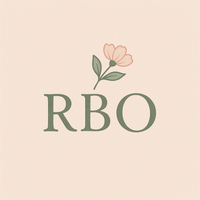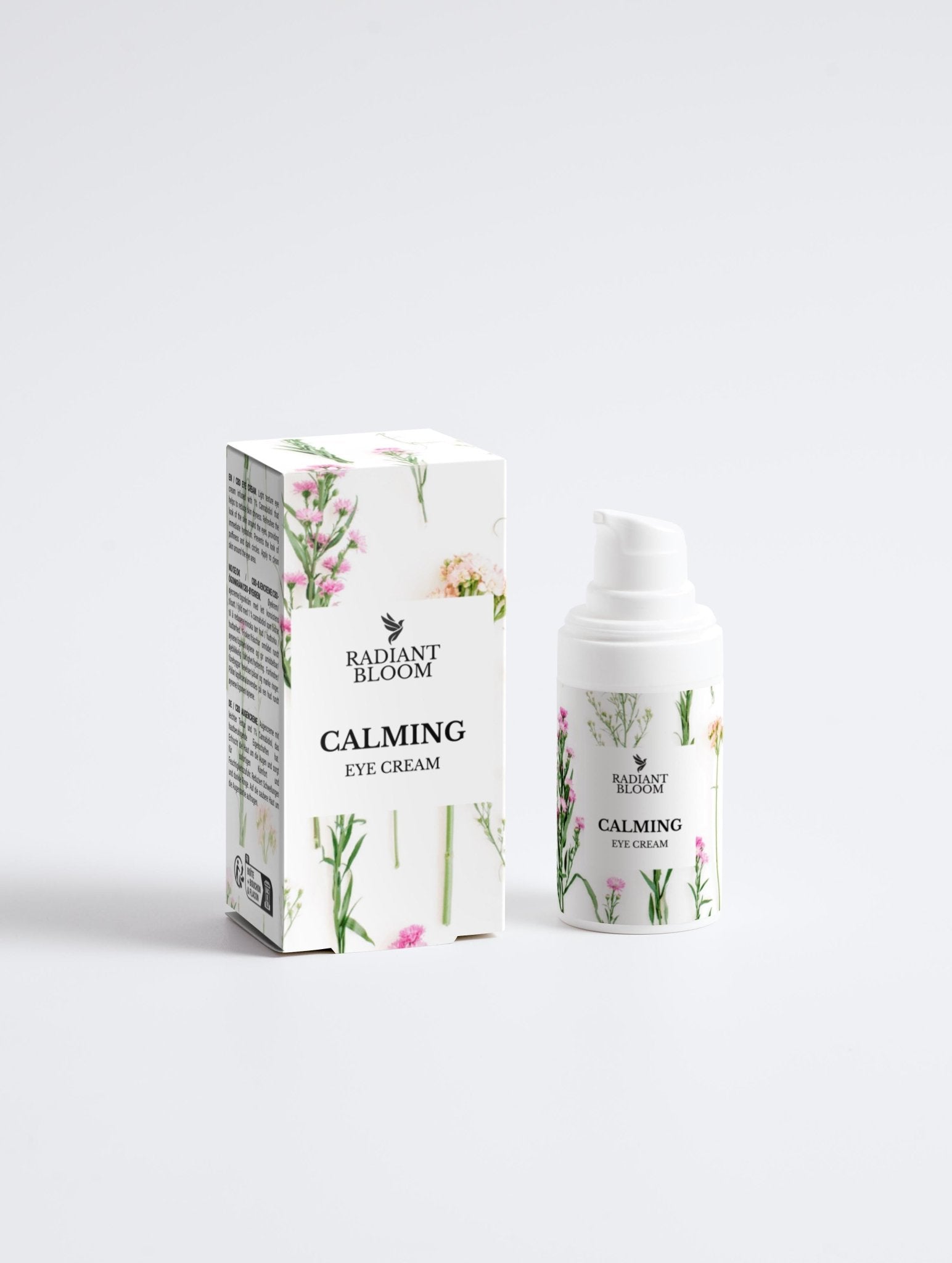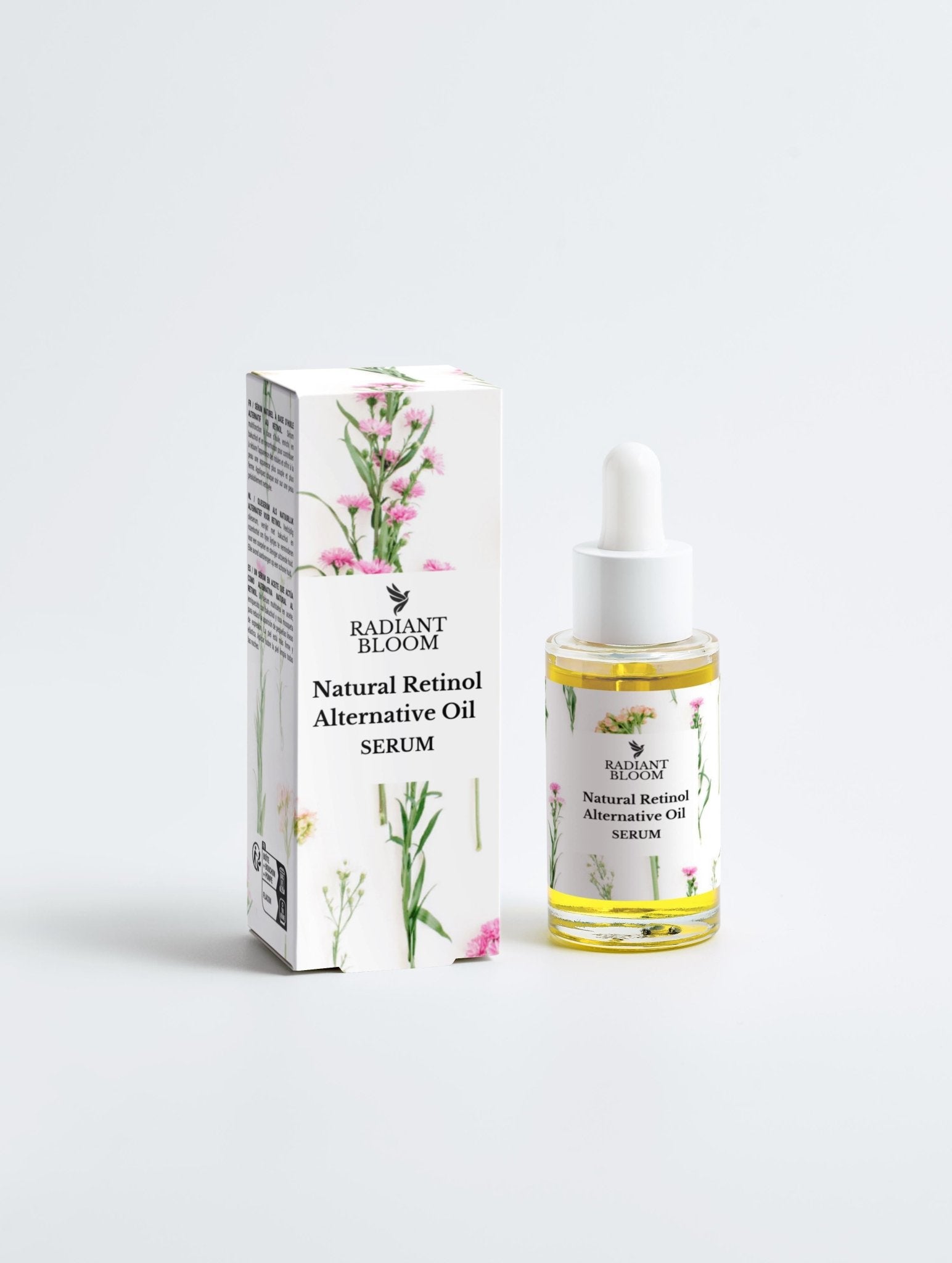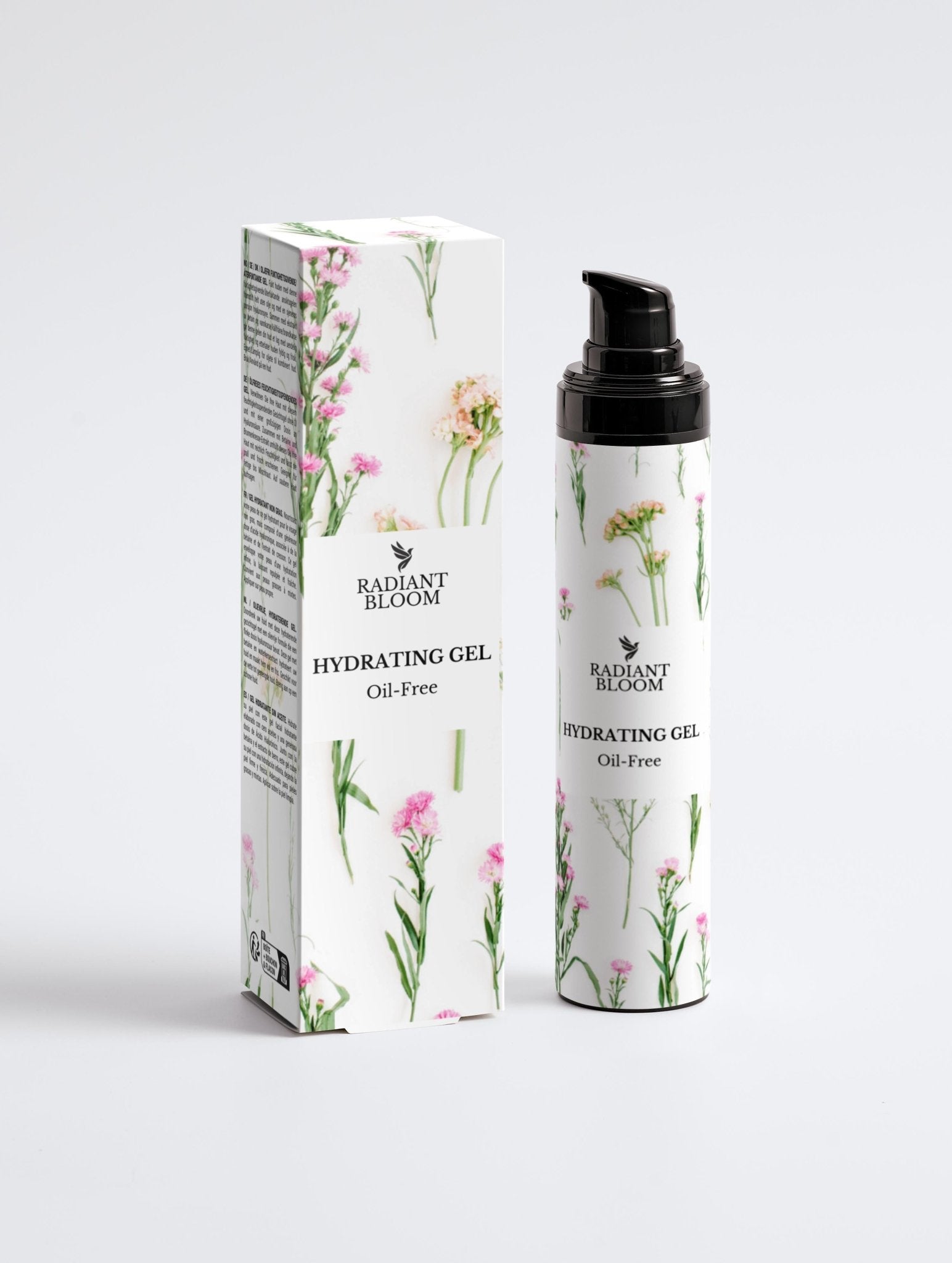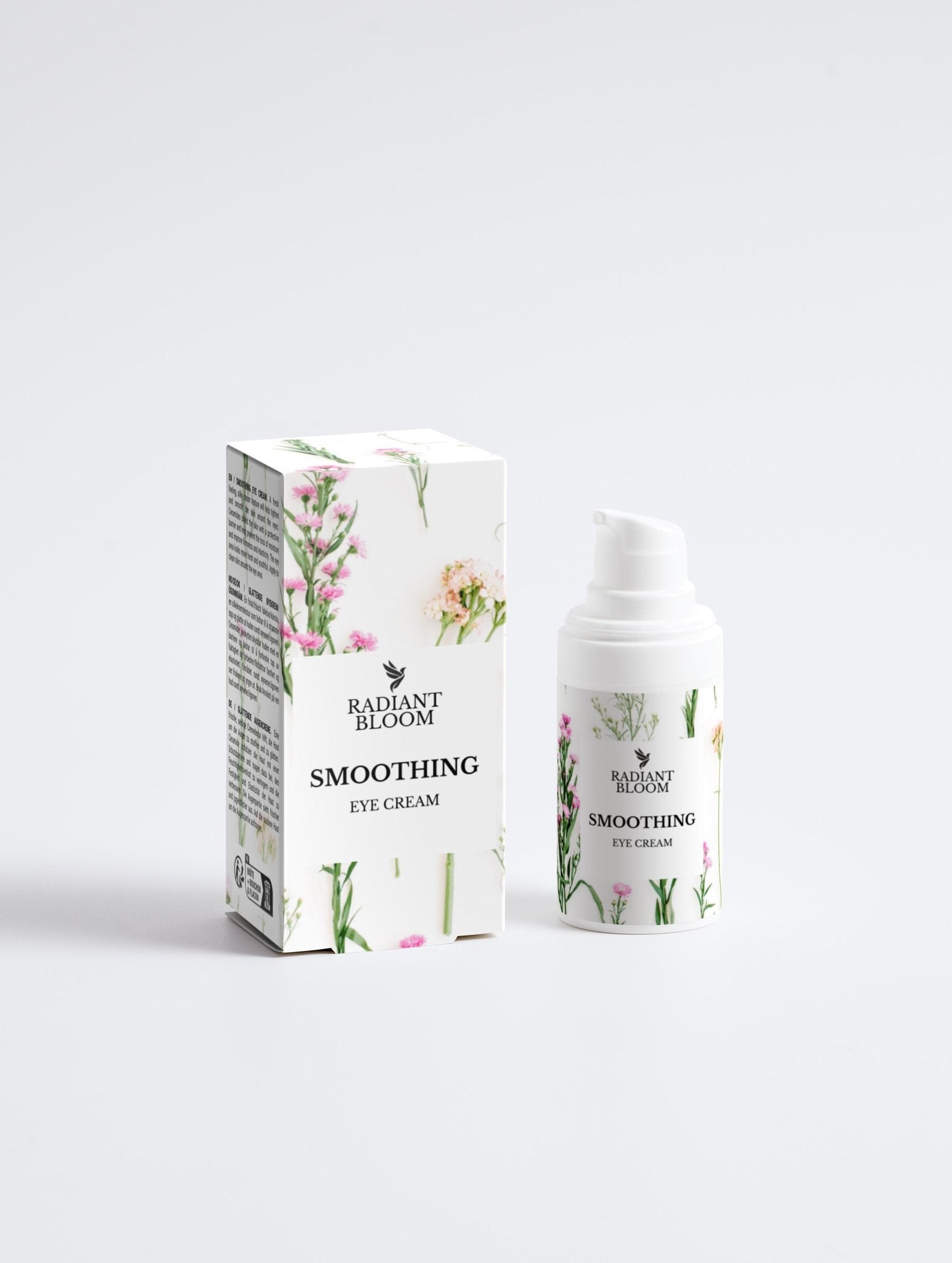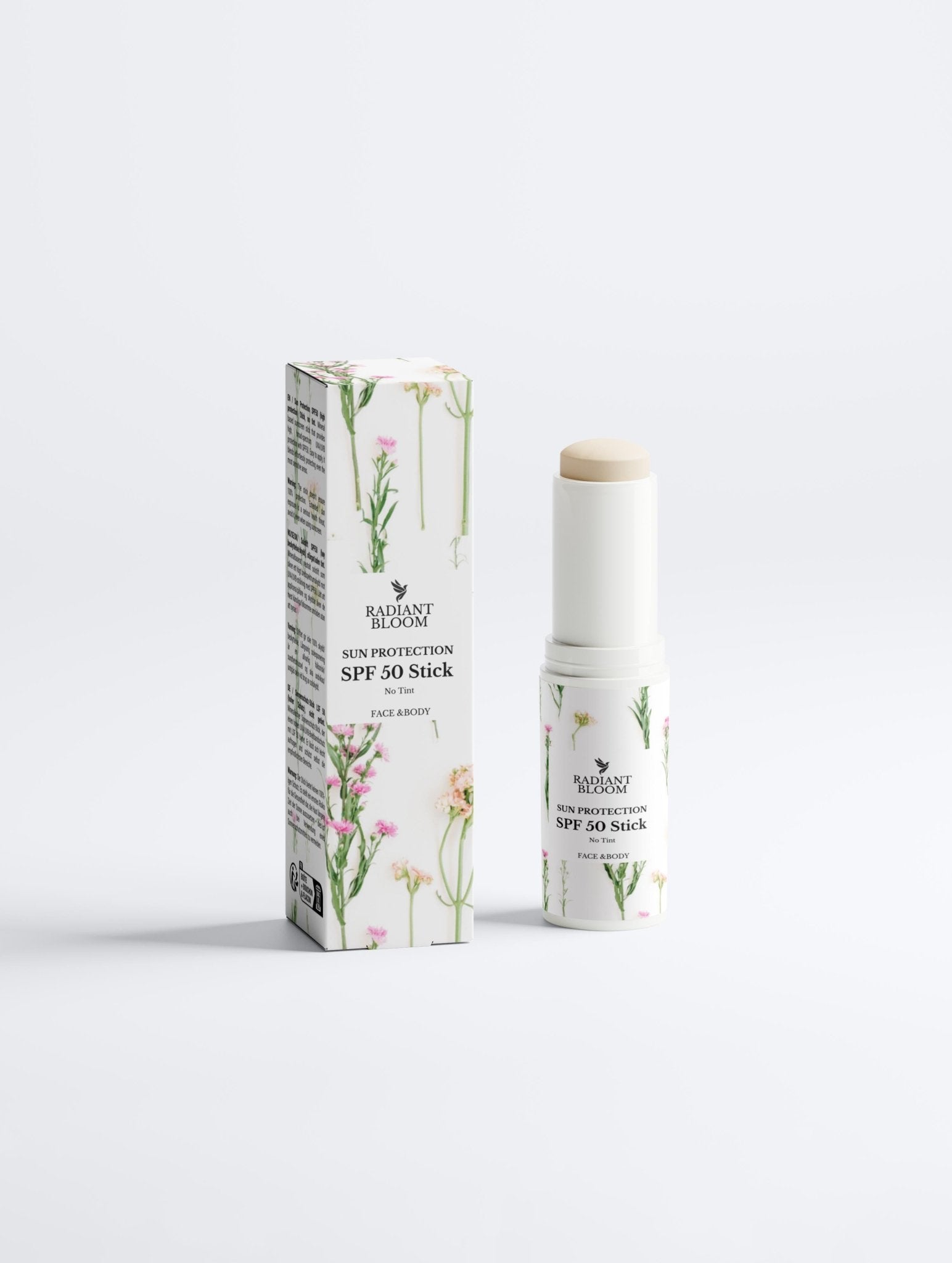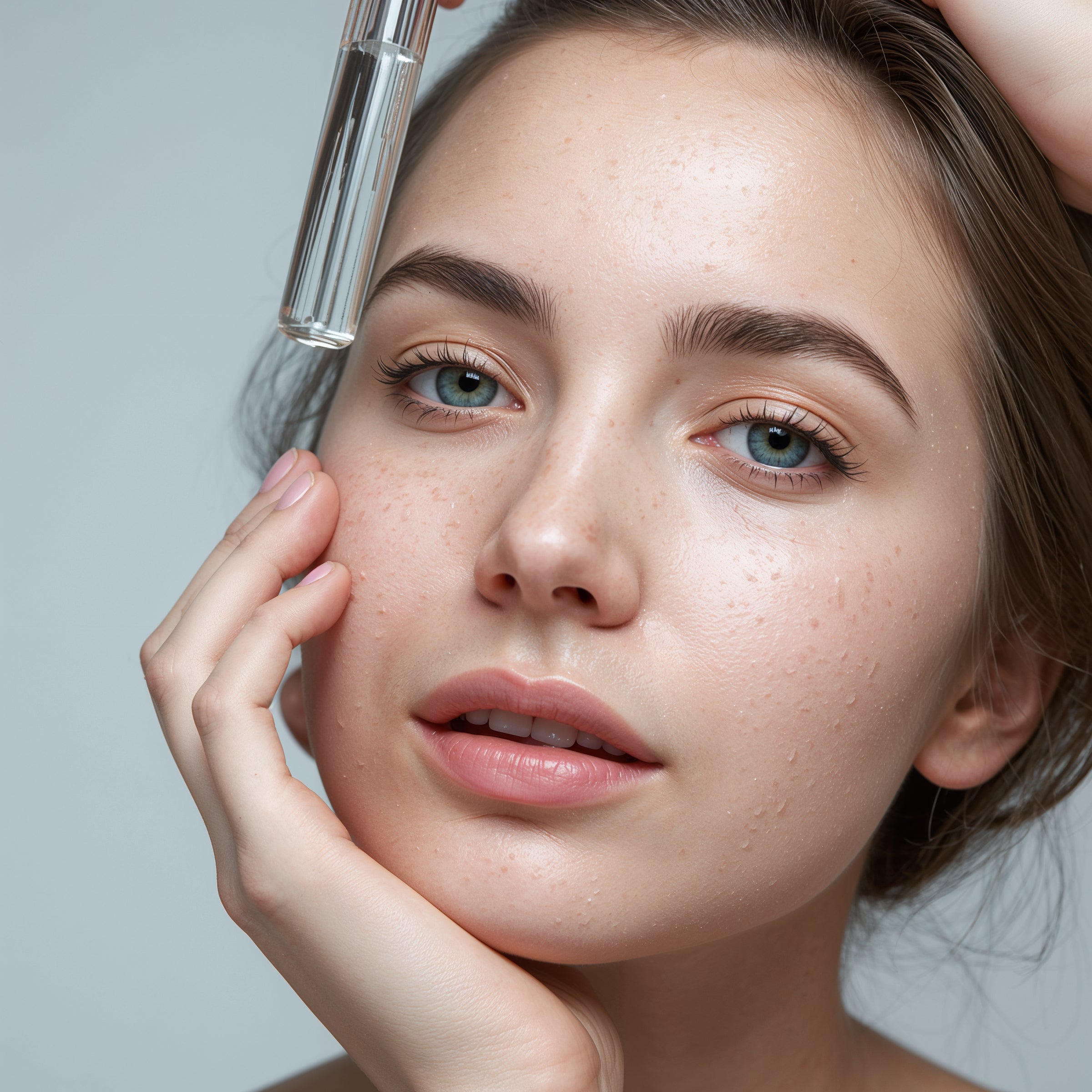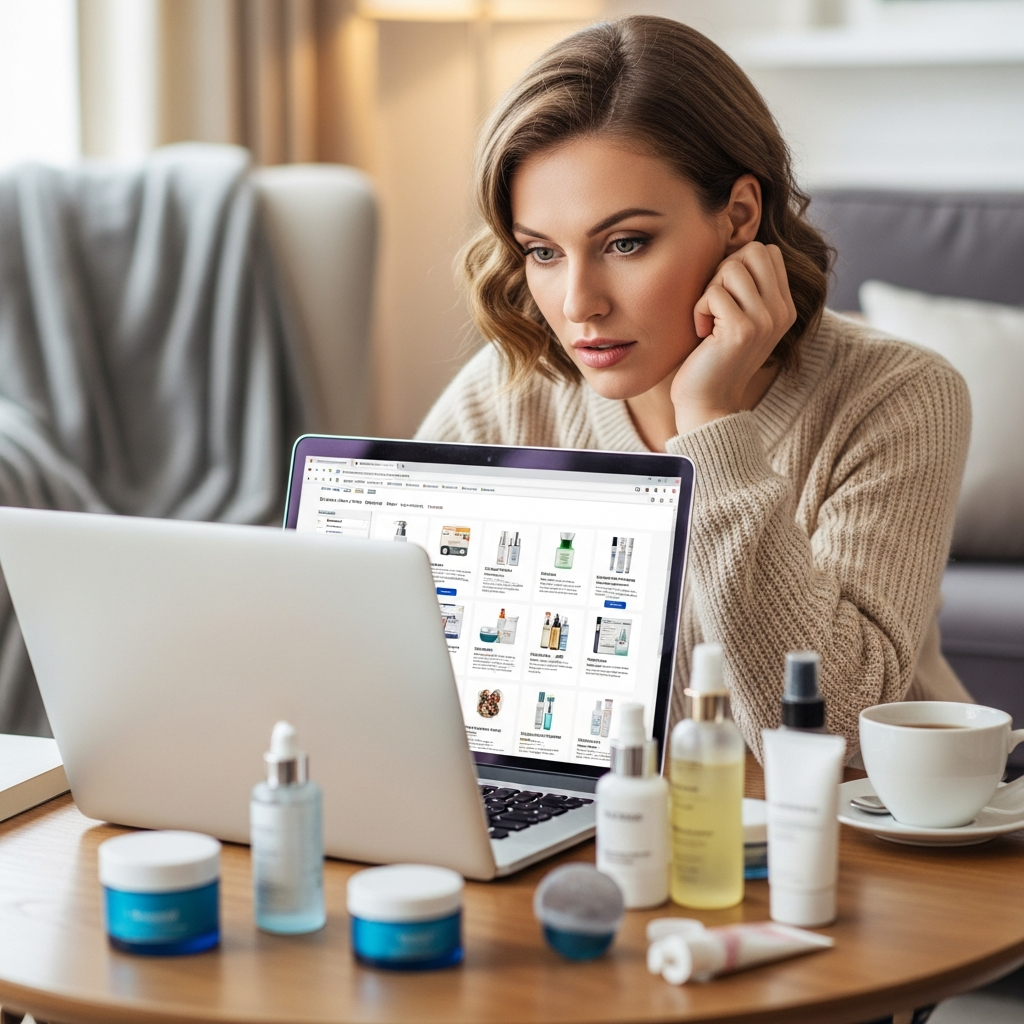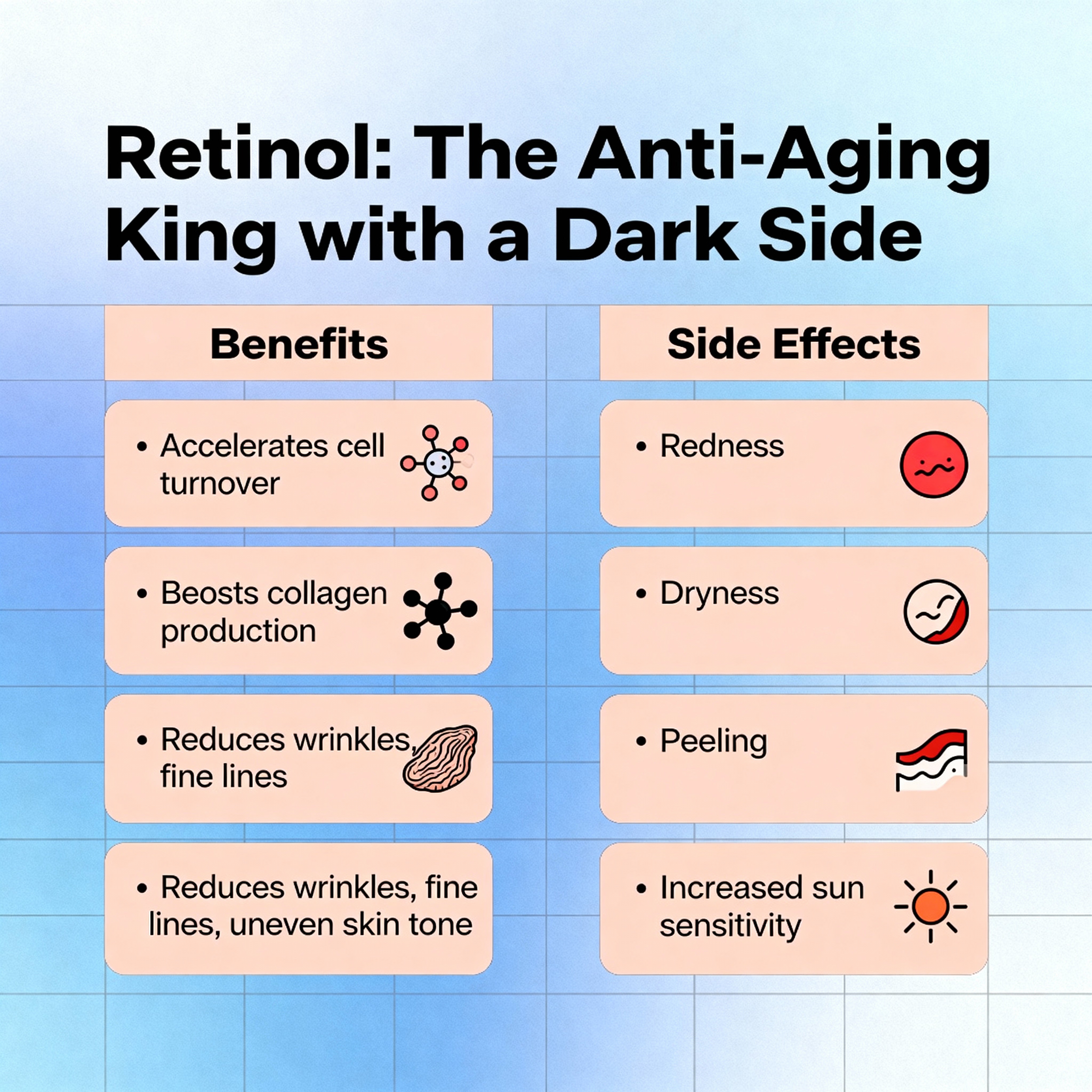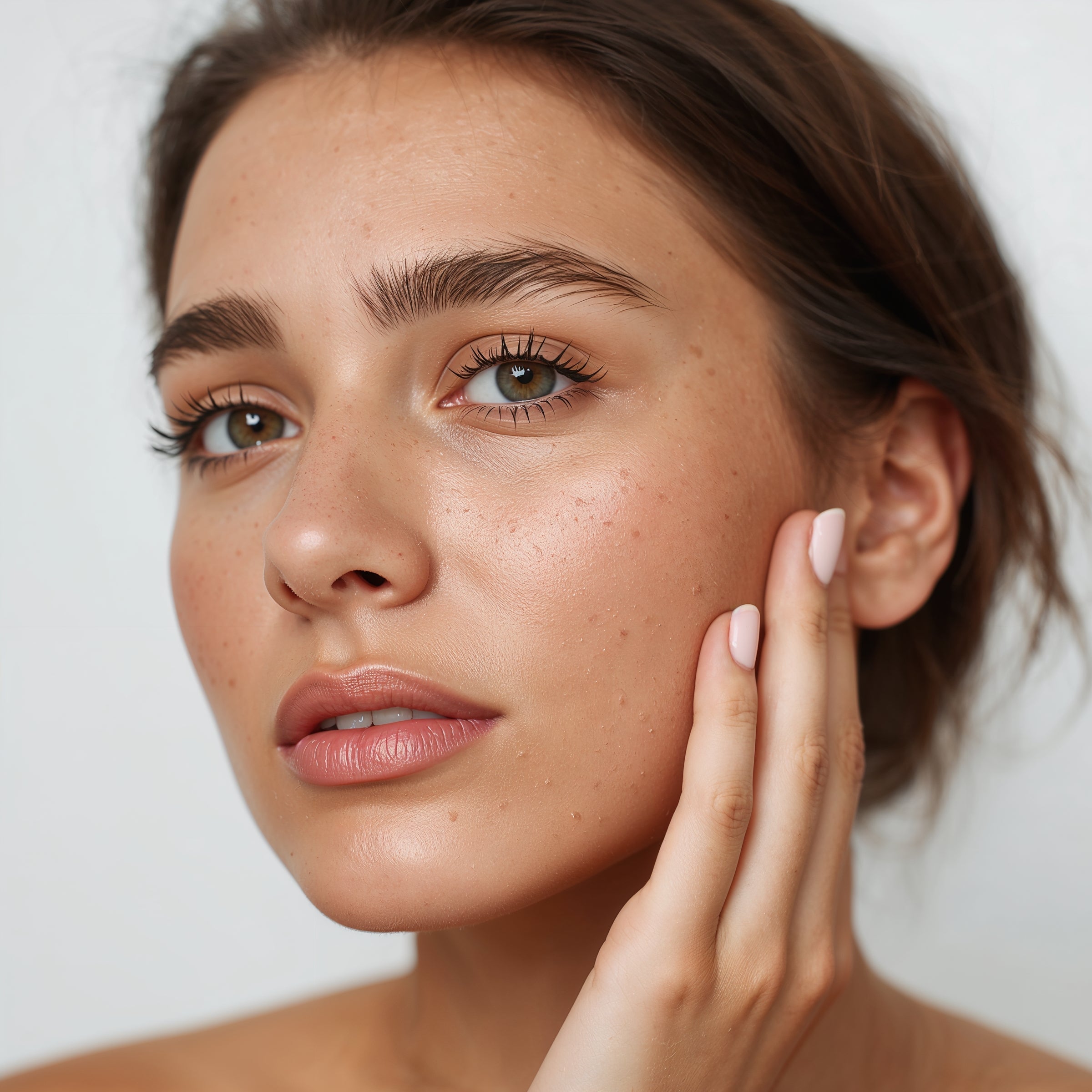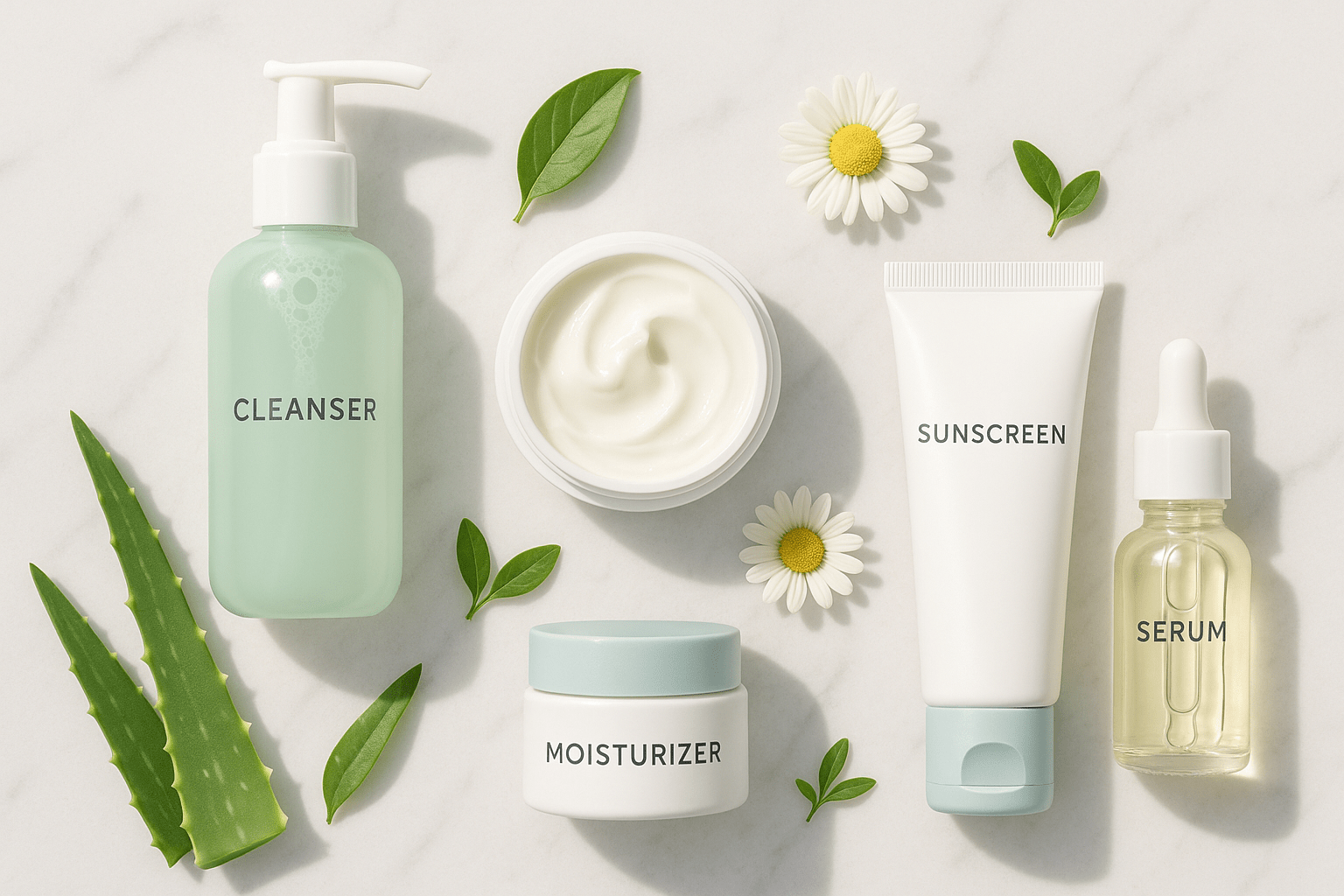Best Natural Skincare for Acne: The Complete Science-Backed Guide to Clear Skin
Last Updated: August 2025 | 15 min read
Quick Answer: The best natural skincare for acne includes tea tree oil (antimicrobial), salicylic acid from willow bark (exfoliant), niacinamide (oil control), and zinc (anti-inflammatory). A consistent routine using natural products like Radiant Bloom Organic can clear acne in 6-8 weeks without harsh chemicals that damage your skin barrier.
Table of Contents
- Understanding Acne: The Root Causes
- Why Natural Skincare Works for Acne
- Best Natural Ingredients for Acne
- Natural vs Conventional Acne Treatments
- Complete Natural Acne Skincare Routine
- Natural Solutions by Acne Type
- Diet and Lifestyle for Clear Skin
- Common Acne Mistakes to Avoid
- Natural Spot Treatments
- Healing Acne Scars Naturally
- Teen vs Adult Acne Natural Solutions
- FAQ
Understanding Acne: The Root Causes

Before treating acne naturally, understanding its causes helps you choose the right approach.
The Four Pillars of Acne Formation
1. Excess Sebum Production
- Hormonal triggers (androgens)
- Genetics determine oil production
- Stress increases sebum
- Wrong products can worsen
2. Clogged Pores (Comedones)
- Dead skin cells accumulate
- Sebum mixes with debris
- Bacteria trapped inside
- Inflammation begins
3. Bacterial Overgrowth
- Cutibacterium acnes (C. acnes)
- Feeds on sebum
- Creates inflammatory compounds
- Spreads to nearby pores
4. Inflammation
- Immune response activated
- Redness and swelling
- Pain and sensitivity
- Can lead to scarring
Types of Acne
Non-Inflammatory:
- Blackheads (open comedones): Oxidized sebum
- Whiteheads (closed comedones): Trapped sebum
Inflammatory:
- Papules: Small red bumps
- Pustules: White/yellow centered bumps
- Nodules: Large, deep, painful bumps
- Cysts: Deep, pus-filled lesions
Acne Triggers to Know
Internal Factors:
- Hormonal fluctuations (puberty, menstruation, pregnancy)
- Genetics (80% hereditary component)
- Stress (cortisol increases oil)
- Gut health imbalances
- Insulin resistance
External Factors:
- Comedogenic products
- Over-cleansing
- Touching face frequently
- Dirty pillowcases/phones
- Humidity and sweat
- Certain medications
Why Natural Skincare Works for Acne
Natural acne treatments offer unique advantages over harsh conventional options:

The Problem with Conventional Acne Treatments
Common Issues:
- Over-drying leads to rebound oil production
- Barrier damage causes sensitivity
- Antibiotic resistance from overuse
- Side effects (peeling, redness, photosensitivity)
- Temporary results without addressing root cause
Natural Skincare Advantages for Acne
Holistic Healing:
- Maintains barrier integrity while treating breakouts
- Anti-inflammatory properties reduce redness
- Antimicrobial without creating resistance
- Balances oil rather than stripping
- Supports skin microbiome health
- Provides nutrients for healing
Scientific Support for Natural Acne Care
Recent Studies Show:
- Tea tree oil as effective as benzoyl peroxide (Journal of Dermatology, 2024)
- Zinc reduces acne by 80% in 12 weeks (Clinical Research, 2024)
- Natural salicylic acid gentler but equally effective (Dermatology Times, 2023)
- Green tea reduces sebum by 70% (International Journal of Cosmetic Science, 2024)
Best Natural Ingredients for Acne
These evidence-backed natural ingredients clear acne effectively:

Tea Tree Oil (Melaleuca alternifolia)
How It Works:
- Antimicrobial action against C. acnes
- Anti-inflammatory properties
- Penetrates pores deeply
- Doesn't cause resistance
Effectiveness:
- 5-10% concentration ideal
- 45% reduction in acne lesions (12-week study)
- Fewer side effects than benzoyl peroxide
How to Use:
- Never apply undiluted
- Mix with carrier oil (jojoba ideal)
- Spot treatment: 2-5% dilution
- All-over treatment: 1-2% dilution
Salicylic Acid from Willow Bark
Natural Source: White willow bark (Salix alba)
Benefits:
- Beta-hydroxy acid (BHA)
- Exfoliates inside pores
- Anti-inflammatory
- Gentler than synthetic version
Clinical Results:
- 50% reduction in comedones
- Prevents new breakouts
- Improves skin texture
Application:
- 0.5-2% concentration
- Use every other night initially
- Can use daily once tolerated
Niacinamide (Vitamin B3)
Acne Benefits:
- Regulates sebum production
- Reduces inflammation
- Minimizes pore appearance
- Prevents post-acne marks
Research Shows:
- 4% as effective as clindamycin
- 60% reduction in inflammatory acne
- Safe for all skin types
Best Practices:
- 5-10% concentration optimal
- Combines well with other ingredients
- Use morning and evening
Zinc
Forms for Acne:
- Zinc oxide (topical)
- Zinc PCA (water-soluble)
- Zinc gluconate (supplements)
How It Helps:
- Anti-inflammatory action
- Regulates hormones
- Speeds wound healing
- Antimicrobial properties
Usage Guidelines:
- Topical: 1-2% in products
- Oral: 30-40mg daily (with food)
- Results visible in 6-12 weeks
Green Tea Extract
Active Compounds:
- EGCG (epigallocatechin gallate)
- Polyphenols
- Catechins
Acne Benefits:
- 70% sebum reduction
- Antioxidant protection
- Anti-inflammatory
- Prevents scarring
Application Methods:
- Toner: Cooled green tea
- Serum: 2-5% extract
- DIY mask: Matcha powder
Azelaic Acid (Natural Sources)
Found In:
- Wheat
- Rye
- Barley
Benefits:
- Kills acne bacteria
- Reduces keratin production
- Fades post-acne marks
- Anti-inflammatory
Concentration:
- 10-20% for acne
- Gentle enough for rosacea
- Safe during pregnancy
Clay (Kaolin, Bentonite)
How Clay Helps:
- Absorbs excess oil
- Draws out impurities
- Unclogs pores
- Gentle exfoliation
Best Types:
- Kaolin: Gentle, all skin types
- Bentonite: Powerful oil absorption
- French Green: Deep cleansing
Usage:
- 1-2x weekly masks
- Spot treatment paste
- Mix with apple cider vinegar
Honey (Raw, Manuka)
Antimicrobial Properties:
- Natural hydrogen peroxide
- Low pH inhibits bacteria
- Enzymes fight infection
- Moisturizes while treating
Clinical Evidence:
- Manuka honey UMF 10+ most effective
- 43% improvement in acne
- Reduces healing time
Application:
- Spot treatment overnight
- 15-minute face mask
- Mix with cinnamon (carefully)
Natural vs Conventional Acne Treatments
Understanding the comparison helps you make informed choices:

Comparison Chart
| Treatment | Natural Option | Conventional | Effectiveness | Side Effects |
|---|---|---|---|---|
| Antibacterial | Tea Tree Oil | Benzoyl Peroxide | Equal | Natural: Minimal / Conventional: Drying, bleaching |
| Exfoliant | Willow Bark | Salicylic Acid | Equal | Natural: Gentle / Conventional: Can be harsh |
| Antibiotic | Honey, Oregano Oil | Clindamycin | Natural: Good / Conventional: Better initially | Natural: None / Conventional: Resistance risk |
| Retinoid | Bakuchiol | Tretinoin | Natural: Moderate / Conventional: Strong | Natural: None / Conventional: Irritation, purging |
| Oil Control | Niacinamide, Clay | Isotretinoin | Natural: Good / Conventional: Excellent | Natural: None / Conventional: Severe potential |
When to Choose Natural
Natural Works Best For:
- Mild to moderate acne
- Sensitive skin
- Pregnancy/breastfeeding
- Long-term maintenance
- Prevention focus
- Overall skin health
When to Consider Conventional
May Need Conventional For:
- Severe cystic acne
- Scarring risk
- No improvement after 12 weeks
- Hormonal acne (may need spironolactone)
- Quick results needed
Hybrid Approach: Many dermatologists now recommend combining natural and conventional treatments for optimal results with fewer side effects.
Complete Natural Acne Skincare Routine
A consistent routine is crucial for clearing acne naturally:

Morning Routine for Acne-Prone Skin
Step 1: Gentle Cleansing (30 seconds)
- Use lukewarm water
- Natural gel or foam cleanser
- Ingredients: Tea tree, salicylic acid
- Don't over-wash (increases oil)
Step 2: Toner (15 seconds)
- Witch hazel (alcohol-free)
- Green tea toner
- Apple cider vinegar (diluted 1:3)
- Balances pH, preps skin
Step 3: Treatment Serum (30 seconds)
- Niacinamide 5-10%
- Tea tree serum
- Azelaic acid
- Pat gently, don't rub
Step 4: Light Moisturizer (30 seconds)
- Non-comedogenic
- Gel or gel-cream texture
- Radiant Bloom Organic light formulas
- Don't skip! Hydration prevents excess oil
Step 5: Sunscreen (60 seconds)
- Mineral SPF 30+
- Non-comedogenic
- Zinc oxide benefits acne
- Essential for preventing marks
Evening Routine for Acne-Prone Skin
Step 1: Oil Cleanse (60 seconds)
- Removes sunscreen/makeup
- Jojoba or hemp seed oil
- Glow & Hydrate Facial Oil
- Dissolves sebum plugs
Step 2: Second Cleanse (60 seconds)
- Gentle natural cleanser
- Remove all oil residue
- Prep for treatments
Step 3: Exfoliant (2-3x weekly)
- Natural BHA (willow bark)
- Enzyme masks (papaya, pumpkin)
- Start slowly, build tolerance
Step 4: Treatment Essence
- Hydrating but lightweight
- CICA for healing
- Green tea for antioxidants
Step 5: Targeted Serum
- Rotate actives:
- Monday/Thursday: Retinol alternative
- Tuesday/Friday: Niacinamide
- Wednesday/Saturday: Azelaic acid
- Sunday: Rest day
Step 6: Moisturizer
- Slightly richer than morning
- Velvety Texture Face Cream if not too heavy
- Lock in treatments
Step 7: Spot Treatment
- Tea tree oil blend
- Sulfur paste
- Zinc oxide
- Only on active breakouts
Weekly Additions
Monday & Thursday:
- Clay mask (15 minutes)
- Focuses on T-zone
- Follow with hydration
Sunday:
- Gentle enzyme exfoliation
- Honey mask for healing
- Extra hydration focus
Natural Solutions by Acne Type
Different acne types require tailored approaches:
Hormonal Acne
Characteristics:
- Jawline and chin location
- Deep, painful cysts
- Flares with menstrual cycle
- Adult women most affected
Natural Treatment Plan:
- Spearmint tea: 2 cups daily (anti-androgen)
- Zinc supplements: 30mg daily
- Omega-3s: Reduce inflammation
- Probiotics: Balance gut-hormone connection
- Topical: Tea tree + niacinamide
Lifestyle Support:
- Reduce dairy intake
- Lower glycemic diet
- Stress management
- Regular exercise
Comedonal Acne (Blackheads/Whiteheads)
Characteristics:
- Non-inflammatory
- Texture issues
- Clogged pores
- Minimal redness
Natural Treatment:
- Daily: Salicylic acid from willow bark
- Weekly: Clay masks
- Oil cleansing: Dissolves plugs
- Regular exfoliation: Enzymes
Best Ingredients:
- BHAs (willow bark)
- Niacinamide
- Retinol alternatives
- Clay
Inflammatory Acne (Papules/Pustules)
Characteristics:
- Red, angry bumps
- Some with white heads
- Painful to touch
- Risk of scarring
Natural Protocol:
- Anti-inflammatory: Green tea, CICA
- Antimicrobial: Tea tree, honey
- Soothing: Aloe vera, chamomile
- Zinc: Topical and oral
Avoid:
- Picking or squeezing
- Harsh scrubs
- Over-treating
- Hot water
Cystic Acne
Characteristics:
- Deep, large lesions
- Very painful
- High scarring risk
- Slow to heal
Natural Approach:
- Internal: Zinc, omega-3s, probiotics
- Topical: Gentle approach
- Professional: Consider dermatologist
- Healing focus: CICA, centella
Important: Severe cystic acne may need medical intervention
Fungal Acne (Pityrosporum Folliculitis)
Characteristics:
- Uniform small bumps
- Itchy
- Doesn't respond to typical treatments
- Forehead and chest common
Natural Antifungals:
- Tea tree oil: Antifungal properties
- MCT oil: Only C8 and C10
- Sulfur: Natural antifungal
- Apple cider vinegar: Diluted
Avoid:
- Oils that feed yeast
- Fermented ingredients
- Heavy moisturizers
Diet and Lifestyle for Clear Skin
Natural acne treatment extends beyond skincare:

Foods That Fight Acne
Anti-Inflammatory Foods:
- Omega-3 rich: Wild salmon, walnuts, flax seeds
- Antioxidants: Berries, green tea, dark leafy greens
- Probiotics: Yogurt, kimchi, sauerkraut
- Zinc sources: Pumpkin seeds, chickpeas, cashews
- Vitamin A: Sweet potatoes, carrots, spinach
Skin-Clearing Beverages:
- Green tea (3 cups daily)
- Spearmint tea (2 cups daily)
- Water (minimum 8 glasses)
- Turmeric latte (anti-inflammatory)
- Fresh vegetable juices
Foods to Avoid or Limit
Acne Triggers:
- High glycemic foods: White bread, sugary snacks
- Dairy products: Especially skim milk
- Whey protein: Can trigger breakouts
- Excess omega-6 oils: Vegetable oils
- Processed foods: Inflammatory
The Research:
- 87% improvement with low-glycemic diet
- Dairy linked to 44% increase in acne
- Sugar spikes insulin, triggering oil production
Lifestyle Factors
Stress Management:
- Cortisol increases sebum
- Practice meditation/yoga
- Regular exercise (but shower after!)
- Adequate sleep (7-9 hours)
- Breathing exercises
Sleep Hygiene:
- Change pillowcases 2x weekly
- Sleep on back if possible
- Silk pillowcases reduce friction
- Remove makeup always
- Night routine consistency
Exercise Benefits:
- Improves circulation
- Reduces stress hormones
- Balances blood sugar
- Promotes detoxification
- Shower immediately after
Supplements for Acne
Evidence-Based Options:
- Zinc: 30-40mg daily
- Omega-3: 1-2g daily
- Probiotics: 10-50 billion CFU
- Vitamin D: 1000-2000 IU
- Vitamin A: 5000-10000 IU (not if pregnant)
Herbal Support:
- Saw palmetto (anti-androgen)
- Milk thistle (liver support)
- Turmeric (anti-inflammatory)
- Green tea extract (antioxidant)
Common Acne Mistakes to Avoid
Even with natural products, these mistakes can worsen acne:
Mistake #1: Over-Cleansing
The Problem:
- Strips natural oils
- Triggers rebound oil production
- Damages skin barrier
- Increases inflammation
The Solution:
- Cleanse maximum 2x daily
- Use lukewarm water
- Gentle, pH-balanced cleansers
- Pat dry, don't rub
Mistake #2: Skipping Moisturizer
The Problem:
- Dehydrated skin produces more oil
- Compromised barrier
- Increased sensitivity
- Poor healing
The Solution:
- Use lightweight, non-comedogenic moisturizers
- Gel or gel-cream textures
- Radiant Bloom Organic light formulas
- Apply to damp skin
Mistake #3: Product Overload
The Problem:
- Too many actives irritate
- Conflicting ingredients
- Overwhelmed skin
- Worsened breakouts
The Solution:
- Start with basics
- Add one product at a time
- Wait 2 weeks between additions
- Less is often more
Mistake #4: Picking and Squeezing
The Problem:
- Spreads bacteria
- Causes scarring
- Prolongs healing
- Increases inflammation
The Solution:
- Hands off policy
- Use spot treatments
- Hydrocolloid patches
- Professional extractions only
Mistake #5: Giving Up Too Soon
The Problem:
- Natural treatments take time
- Switching products frequently
- Not allowing adjustment period
- Missing the improvement window
The Solution:
- Commit to 8-12 weeks
- Document progress
- Be patient with purging
- Consistency is key
Mistake #6: Ignoring Expired Products
The Problem:
- Bacteria growth
- Reduced efficacy
- Potential irritation
- Clogged pores
The Solution:
- Check expiration dates
- Replace mascara every 3 months
- Clean makeup brushes weekly
- Store products properly
Natural Spot Treatments
Target individual blemishes with these natural remedies:

Tea Tree Oil Spot Treatment
Recipe:
- 1 part tea tree oil
- 9 parts jojoba oil
- Optional: 1 drop lavender oil
Application:
- Clean cotton swab
- Apply directly to blemish
- Leave overnight
- Use for 3-5 days
Honey & Cinnamon Paste
Ingredients:
- 1 tsp raw honey (preferably Manuka)
- 1/4 tsp cinnamon
- Tiny amount only!
Caution: Cinnamon can irritate - patch test first
Aspirin Mask (Salicylic Acid)
DIY Recipe:
- 2-3 uncoated aspirin tablets
- Few drops water
- 1 tsp honey
Method:
- Crush aspirin
- Add water to paste
- Mix with honey
- Apply to spots 10 minutes
- Rinse thoroughly
Ice Therapy
For Inflamed Acne:
- Wrap ice in clean cloth
- Apply 1-2 minutes
- Reduces inflammation
- Numbs pain
- Shrinks appearance
Sulfur Treatment
Natural Sulfur Sources:
- MSM (methylsulfonylmethane)
- Volcanic clay
- Sulfur masks
Benefits:
- Dries out blemishes
- Antimicrobial
- Keratolytic action
- Reduces oiliness
Healing Acne Scars Naturally
Prevent and treat acne scarring with natural ingredients:

Types of Acne Scars
Atrophic Scars (Indented):
- Ice pick: Deep, narrow
- Boxcar: Broad depressions
- Rolling: Wavy texture
Post-Inflammatory Hyperpigmentation (PIH):
- Dark marks
- Not true scars
- Easier to treat
- Fade with time
Natural Scar Prevention
During Active Acne:
- Don't pick or squeeze
- Treat inflammation quickly
- Use sun protection always
- Support healing with CICA
- Keep skin moisturized
Natural Ingredients for Scar Treatment
For PIH (Dark Marks):
- Vitamin C: Brightens and evens tone
- Niacinamide: Reduces pigmentation
- Licorice root: Natural lightening
- Azelaic acid: Fades marks
- Alpha arbutin: Gentle brightening
For Textured Scars:
- Rosehip oil: High in vitamin A
- Bakuchiol: Stimulates collagen
- Peptides: Skin rebuilding
- Snail mucin alternative: Healing
- Vitamin E: Controversial but may help
Natural Scar Treatment Routine
Morning:
- Gentle cleanse
- Vitamin C serum
- Niacinamide
- Moisturizer
- SPF 50 (crucial!)
Evening:
- Double cleanse
- Exfoliant (3x weekly)
- Rosehip oil
- Glow & Hydrate Facial Oil
- Velvety Texture Face Cream
Weekly:
- Enzyme masks
- Gentle dermaplaning
- LED light therapy (red light)
Timeline for Natural Scar Improvement
- Week 1-4: Prevention focus
- Week 4-8: PIH begins fading
- Week 8-12: Noticeable improvement
- Month 3-6: Significant fading
- Month 6-12: Texture improvement
Teen vs Adult Acne Natural Solutions
Different ages require different approaches:

Teen Acne
Characteristics:
- T-zone focused
- Puberty-driven
- Often oilier skin
- Blackheads common
Natural Teen Routine: AM:
- Gentle gel cleanser
- Alcohol-free toner
- Light moisturizer
- SPF
PM:
- Same cleanser
- Salicylic acid (from willow bark)
- Tea tree spot treatment
- Oil-free moisturizer
Teen-Specific Tips:
- Simple routine best
- Education about not picking
- Clean phone screens
- Change pillowcases frequently
- Avoid heavy makeup
Adult Acne
Characteristics:
- U-zone (jawline, chin)
- Often hormonal
- Drier surrounding skin
- More inflammatory
Natural Adult Routine: AM:
- Cream cleanser
- Hydrating toner
- Niacinamide serum
- Moisturizer for combination skin
- SPF
PM:
- Oil cleanse
- Gentle second cleanse
- Treatment rotation (retinol alternative, acids)
- Rich moisturizer on dry areas
- Spot treatment as needed
Adult-Specific Considerations:
- Anti-aging + acne treatment
- Hormonal support
- Stress management crucial
- Professional treatments helpful
Frequently Asked Questions
How long does natural acne treatment take to work?
Expect initial improvements in 2-4 weeks, significant clearing in 6-8 weeks, and optimal results after 12 weeks. Natural treatments work gradually but provide lasting results without damaging your skin barrier.
Can natural ingredients make acne worse initially?
Yes, some people experience "purging" when starting treatments like salicylic acid or retinol alternatives. This temporary worsening (lasting 2-4 weeks) brings underlying congestion to the surface before clearing.
Is natural skincare strong enough for cystic acne?
Mild to moderate cystic acne can respond to natural treatments combined with lifestyle changes. Severe cystic acne may require medical intervention initially, then natural maintenance. Always consult a dermatologist for severe cases.
Can I use natural acne treatments while pregnant?
Many natural ingredients are pregnancy-safe: azelaic acid, niacinamide, vitamin C, zinc, honey, and green tea. Avoid: retinol/bakuchiol, high-dose salicylic acid, and essential oils. Always consult your healthcare provider.
Should I use different natural products for body acne?
Body skin is thicker and can handle stronger treatments. Use: tea tree body wash, salicylic acid sprays, clay masks on back/chest, and lightweight natural moisturizers. Radiant Bloom Organic products work for face and body.
Can diet alone clear acne naturally?
While diet significantly impacts acne, most people need both dietary changes and topical treatments for best results. Eliminate triggers, add skin-supporting foods, and use natural skincare for comprehensive approach.
How do I know if my acne is bacterial or fungal?
Bacterial acne: varied sizes, inflamed, responds to antibacterials. Fungal acne: uniform small bumps, itchy, worsens with oils, common on forehead/chest. If unsure, consult a dermatologist for proper diagnosis.
Can I combine natural and prescription acne treatments?
Yes! Many dermatologists recommend this hybrid approach. Use prescription treatments as directed, then support with natural ingredients for healing, hydration, and barrier repair. Always inform your dermatologist about all products used.
What's the best natural ingredient for acne scars?
For dark marks (PIH): vitamin C, niacinamide, licorice root. For textured scars: rosehip oil, bakuchiol, peptides. Consistency and sun protection are crucial for any scar treatment.
Why does my natural routine work then stop?
Your skin may have adapted, or hormonal changes occurred. Try: rotating active ingredients, addressing new triggers (stress, diet), checking product expiration, or consulting a professional for routine adjustment.
Your Clear Skin Action Plan

Week 1-2: Foundation
- [ ] Stop using harsh products
- [ ] Start basic natural routine
- [ ] Take before photos
- [ ] Begin food diary
- [ ] Order Radiant Bloom Organic products
Week 3-4: Building
- [ ] Add one treatment product
- [ ] Implement dietary changes
- [ ] Start supplement routine
- [ ] Practice stress management
- [ ] Document changes
Week 5-8: Optimization
- [ ] Full routine established
- [ ] Fine-tune products
- [ ] Add weekly treatments
- [ ] Notice improvements
- [ ] Stay consistent
Week 9-12: Mastery
- [ ] Evaluate results
- [ ] Adjust as needed
- [ ] Maintenance mode
- [ ] Share success story
- [ ] Help others
Natural Acne Success Stories

Sarah's Hormonal Acne Journey
"After years of harsh treatments that destroyed my skin barrier, I switched to natural products from Radiant Bloom Organic. Tea tree oil, niacinamide, and dietary changes cleared my jawline acne in 8 weeks without the dryness and irritation."
Mark's Teen Acne Transformation
"Natural salicylic acid from willow bark and consistent routine cleared my severe teen acne. The Glow & Hydrate Oil actually helped my oily skin by balancing it. Six months later, I have clear skin and no scarring."
Jennifer's Adult Acne Solution
"At 35, I developed acne for the first time. Natural ingredients like CICA, zinc, and green tea, plus removing dairy, gave me clearer skin than I had in my 20s. Patience with natural treatment paid off!"
Special Offer: Clear Skin Naturally
Start Your Natural Acne Healing Journey
Exclusive for Blog Readers:
Subscribe to our newsletter and receive:
- 15% off your first Radiant Bloom Organic order
- Free Natural Acne Guide PDF
- Weekly clear skin tips
- Access to our support community
Recommended for Acne-Prone Skin:
- Purifying cleansers with tea tree
- Balancing serums with niacinamide
- Glow & Hydrate Facial Oil for oil balancing
- Light moisturizers that won't clog pores
Why Choose Radiant Bloom for Acne:
- ✅ 100% Natural, non-comedogenic formulas
- ✅ Vegan and eco-certified
- ✅ No harsh chemicals or irritants
- ✅ Free shipping on orders over $150
- ✅ 30-day money-back guarantee
Contact: info@radiantbloomorganic.com
Conclusion: Clear Skin, Naturally
Achieving clear skin naturally isn't just possible—it's often more effective long-term than harsh conventional treatments. By understanding acne's root causes and treating it with respect for your skin's natural processes, you can achieve lasting clarity without compromising your skin barrier.
The journey to clear skin requires patience, consistency, and the right natural ingredients. Whether you're dealing with teen acne, adult hormonal breakouts, or anything in between, nature provides powerful solutions that work with your skin, not against it.
Remember: every skin is unique. What works for others might need adjustment for you. Start with the basics, add treatments gradually, and give your skin time to respond. With natural products like those from Radiant Bloom Organic, a consistent routine, and healthy lifestyle choices, clear skin is within reach.
Your acne doesn't define you, but how you treat it can transform not just your skin, but your confidence and relationship with self-care. Choose natural, choose patience, choose clear skin that lasts.

Related Articles
Continue your natural skincare journey:
